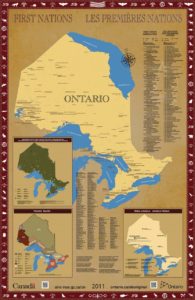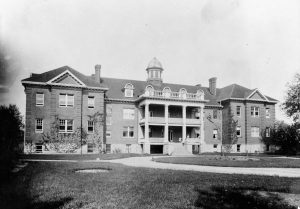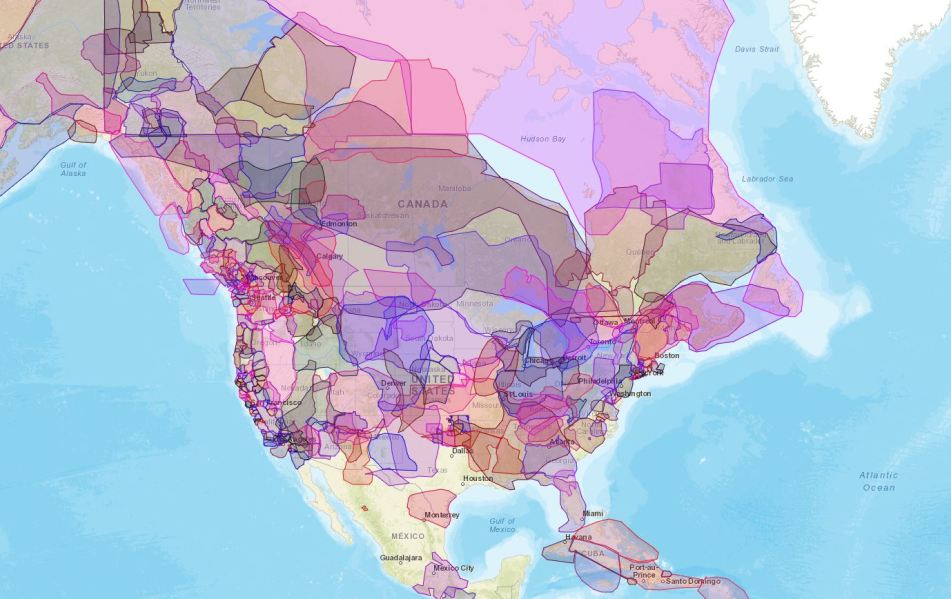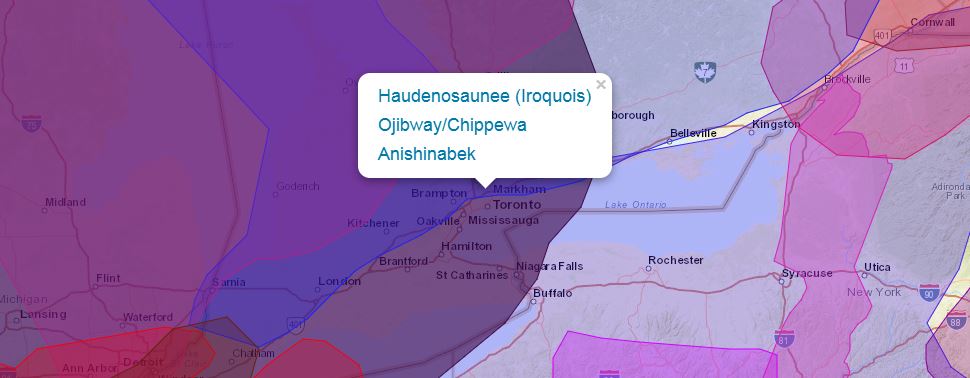A visit last weekend to the former Anglican Mohawk Institute Residential School in Brantford, Ontario, was a disturbing but educational experience. Three survivors from Six Nations of the Grand River First Nation generously shared their stories as they guided us through the property, which was operated by the Government of Canada from 1885 to 1970.
The Toronto Star has featured accounts of the traumatic experiences of the survivors we met, Geronimo Henry (2007) and Dawn Hill and Roberta Hill (2016), the latter article with photos from inside the school.
Many thanks to our guides and to organizers from the Ontario Archaeological Society’s 2017 Annual Symposium.
The tour, and visit to the adjacent marvellous Woodland Cultural Centre, emphasized how much I have to learn about Canada’s First Nations, Métis, and Intuit, both past and present. Here’s a collection of educational resources I’m finding useful, for interested Canadians and others (and me) to explore.
Webinar: Ontario Archaeology 101
“…or 12,000 Years in 60 Minutes.” In this Ontario Historical Society webinar, which I was privileged to host, Paul Racher of the Ontario Archaeological Society presents an outstanding (and entertaining) illustrated introduction to the archaeology of the province, including a discussion of the role archaeology can play as Canada moves to renew its relationship with First Nations. Absolutely worth your time to watch (54 minutes).
The Archaeology of Ontario: A Summary
The Ontario Archaeological Society provides a concise summary of the archaeology of the province, from post ice-age geography and environment, through the first people of North America including pre-contact Archaic and Woodland periods, to the contact period, the French period (1650-1763 AD), and the English period (1760-1867 AD).
Ontario First Nations Maps

The Government of Canada has published online:
- An Ontario First Nations Map showing the locations of First Nation communities listed by band number and cultural affiliation, plus Tribal Councils, reserves, political organizations, and land covered by specific treaties.
- An Ontario Treaties Map illustrating all the First Nations and Treaties in Ontario.
Copies of these maps may be downloaded from the website or ordered by mail for free (really – I tried it).
Archives Association of Ontario: Toward Truth and Reconciliation
In response to the findings of the Truth and Reconciliation Commission of Canada, the Archives Association of Ontario has created an evolving resources page filled with useful links to information about understanding Indigenous issues and terminology, scholarly publications, Indigenous art, educational, and cultural organizations in Ontario, and much more. An excellent collection, which should be especially useful to archivists (obviously) and librarians.
Library and Archives Canada: Aboriginal Heritage

The LAC website’s Aboriginal Heritage resources section notes that “Aboriginal documentary heritage found in the holdings of Library and Archives Canada (LAC) reflects the exemplary contributions of Aboriginal peoples to this country’s political, social, economic and cultural development.”
Links are provided to general tools and resources, photographic collections, databases, reference websites, valuable research guides and finding aids, and virtual exhibitions (including the ongoing Project Naming, which enables Indigenous peoples to engage in the identification of hitherto unnamed individuals in LAC photos).
A Lost Heritage: Canada’s Residential Schools
CBC Digital Archives provides a collection of videos from The National and other CBC television news programs, plus associated content, on the subject of Residential Schools. The earliest clip is ‘The Eyes of Children’ – Christmas at a Residential School from 1962 (29 minutes).
Native-Land.ca
Native-Land.ca is an online resource created to help North Americans learn more about their local history. You can type in an address to see on a map the traditional territory on which the location is situated, with links to further information.
For instance, the map (a work in progress) indicates that the north Toronto area is on the traditional territory of the Haudenosaunee (Iroquois), Ojibway/Chippewa, and Anishinabek.
Acknowledging Traditional Territory
The Canadian Association of University Teachers (CAUT) has put together a handy guide to acknowledging First Peoples and traditional territory. If you know a nearby educational institution, you can quickly look up the acknowledged local traditional territory. For instance, the sample acknowledgement provided by the University of Toronto says:
2/ I (we) wish to acknowledge this land on which the University of Toronto operates. For thousands of years it has been the traditional land of the Huron-Wendat, the Seneca, and most recently, the Mississaugas of the Credit River. Today, this meeting place is still the home to many Indigenous people from across Turtle Island and we are grateful to have the opportunity to work on this land.
First Nations on Twitter
For current information on what’s going on in communities in the province, here are some Twitter accounts I’m following (of many existing):
- The Anishinabek Nation @AnishNation
- Chiefs of Ontario @ChiefsofOntario
- Ontario’s Ministry of Indigenous Relations and Reconciliation @IndigenousON
- Native Canadian Centre of Toronto @NativeCentre
- First Story Toronto (bus & walking tours, and mobile app) @FirstStory_TO
- The Indigenous Studies Students’ Union (ISSU) at University of Toronto @issu_UofT
- First Nations House at University of Toronto @UofTFNH
- Indigenous Studies at University of Toronto @IndigenousUofT
If you found this post interesting, feel free to share it.


